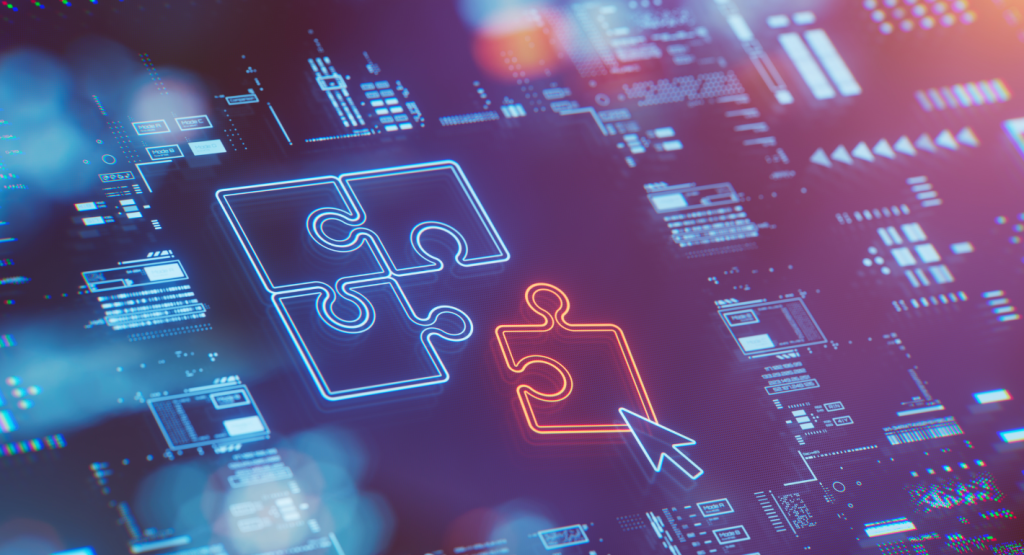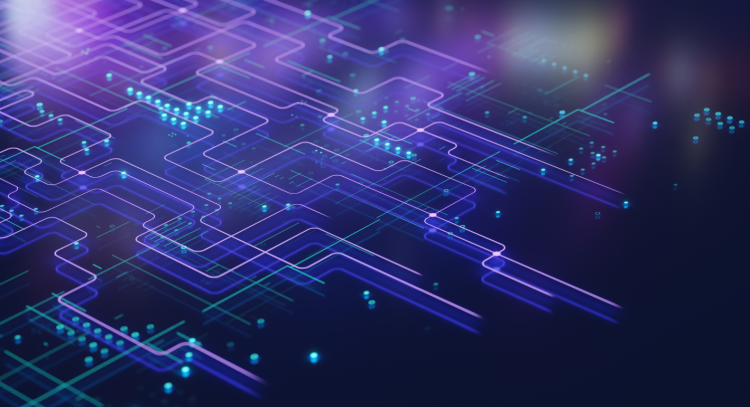The story of computing has always been one of evolution — a relentless pursuit of speed, efficiency, and intelligence. From the vacuum tubes of the 1940s to the microprocessors of the 1970s, from the rise of personal computers to the distributed cloud networks that define our present, each era has been powered by an underlying revolution in how we process information. Yet, as artificial intelligence, simulation, and data-driven science demand exponentially greater computational capabilities, we are approaching the physical and conceptual limits of traditional architectures. The next generation of computing power — what we might call new compute — will not merely be faster; it will be fundamentally different.
The End of the Silicon Plateau
For decades, Moore’s Law served as the heartbeat of the digital age. Every 18 months, the number of transistors on a chip doubled, driving performance gains and cost reductions across industries. But as transistor sizes approach atomic scales, quantum effects begin to erode the predictability of silicon-based systems. Leakage currents, heat dissipation, and physical miniaturization limits have slowed Moore’s curve to a crawl.
This slowdown does not mark the end of innovation; rather, it signals a shift in focus. The pursuit of more powerful computation is no longer solely about smaller transistors, but about smarter architectures. The future of computing power will be defined by how well we can orchestrate heterogeneous systems — CPUs, GPUs, AI accelerators, neuromorphic chips, quantum processors, and photonic systems — into coherent, intelligent infrastructures.
The architectural revolution is already underway. In supercomputers and hyperscale data centers, we are seeing hybrid systems that combine general-purpose and domain-specific processors. The world’s fastest supercomputers, such as Frontier and Fugaku, achieve their astonishing performance not through a single breakthrough, but through orchestration — integrating thousands of chips, millions of cores, and petabytes of interconnected memory into a symphony of computation.
The Rise of Specialized Compute
For much of computing history, the central processing unit (CPU) reigned supreme — a universal engine designed to handle any computational task. But universality comes at a cost. As workloads diversified, especially with the rise of artificial intelligence, traditional CPUs could no longer keep up with the parallel demands of modern computation. Enter the era of specialization.
Graphics processing units (GPUs), originally built for rendering video games, have become the backbone of AI and machine learning. Their ability to perform thousands of operations simultaneously makes them ideal for neural network training, where vast arrays of matrix multiplications define performance. Google’s Tensor Processing Unit (TPU) extended this logic further, crafting chips designed specifically for deep learning. Similarly, Apple’s Neural Engine and Amazon’s Inferentia represent the growing trend of domain-specific silicon.
Beyond AI, other specialized architectures are emerging for scientific simulation, encryption, and network acceleration. The principle is clear: the future of compute is task-aware. Instead of building one processor to handle everything, engineers are designing ecosystems of processors optimized for specific cognitive or computational functions — much like the division of labor in a biological brain.
Memory and Data: The New Bottleneck
While compute units grow faster, data movement remains stubbornly slow and energy-intensive. The so-called “memory wall” has become one of the greatest barriers to performance. Traditional architectures separate computation (the processor) from data storage (the memory), creating inefficiencies in energy and latency as information shuttles back and forth.
Emerging technologies seek to collapse this boundary. Compute-in-memory and processing-near-memory architectures aim to integrate computation directly into memory cells, reducing data transfer overhead. At the same time, novel materials such as memristors — electrical components that combine storage and processing — promise to blur the line between memory and compute even further.
In the age of AI, where data volume doubles every few years, the efficiency of data movement may soon matter more than raw computational throughput. The architecture of tomorrow will therefore prioritize data locality — computing where the data lives, rather than moving data to computation. This principle underpins not only hardware innovation but also the rise of edge computing, where processing occurs closer to sensors and devices, reducing latency and bandwidth costs.
Quantum and Neuromorphic Frontiers
If silicon represents the classical era of computation, then quantum and neuromorphic systems represent the post-classical frontier. Both technologies break from conventional logic in pursuit of fundamentally new ways to compute.
Quantum computing leverages the principles of superposition and entanglement to perform operations on qubits, which can represent multiple states simultaneously. This enables exponential parallelism — a quantum computer with 300 qubits could theoretically represent more states than there are atoms in the observable universe. While practical quantum systems remain limited by coherence times and error correction challenges, progress is rapid. Companies like IBM, Google, and IonQ are already building quantum processors capable of solving specialized problems that classical systems find intractable, such as optimization, molecular simulation, and cryptography.
Neuromorphic computing, on the other hand, draws inspiration from biology. Instead of processing information sequentially, neuromorphic chips mimic the parallel, event-driven nature of the human brain. They use spiking neurons and synapses to encode information in both space and time, enabling ultra-low-power, adaptive computation. Intel’s Loihi and IBM’s TrueNorth are pioneering prototypes, demonstrating energy efficiencies orders of magnitude better than traditional chips for certain cognitive tasks.
Both paradigms share a philosophical core: they move beyond deterministic logic to probabilistic, adaptive, and context-aware computation. The next generation of computing power will not only calculate but perceive, predict, and evolve.

The Intelligent Fabric of Compute
As compute architectures diversify, managing them becomes a challenge of intelligence rather than raw engineering. Future systems will need to self-optimize, dynamically allocate resources, and learn from workload patterns — effectively becoming self-aware computing fabrics.
AI-driven orchestration systems are already being deployed in cloud environments, where machine learning models manage resource allocation and performance tuning. In the future, these systems could extend to the hardware layer, allowing processors to monitor their own performance, predict failures, and reconfigure networks in real time.
This is the dawn of what we might call cognitive infrastructure — computing systems that think about their own thinking. Imagine a data center that continuously learns which configurations produce optimal energy efficiency or a neural accelerator that rewires itself to better handle the next generation of AI models. In this vision, compute is not static hardware but a living, adaptive ecosystem.
The Energy Equation
Computation consumes energy — and at the scale of modern AI, that energy footprint is enormous. Training a single large language model can emit as much carbon dioxide as five cars over their lifetimes. As demand for AI and simulation grows, the sustainability of compute becomes a defining issue.
Innovations in chip design and cooling are addressing some of these concerns. Liquid cooling, 3D chip stacking, and advanced materials reduce thermal waste, while low-power architectures like ARM and RISC-V gain traction for efficiency. Yet the real shift may come from integrating green compute principles — designing systems that optimize for performance per watt rather than raw speed.
Data centers are increasingly powered by renewable energy sources, while AI models are being trained to compress themselves through model distillation and sparse computation, achieving similar performance with fewer operations. The balance between computational ambition and planetary responsibility will define the ethics of next-generation computing.
The Geopolitics of Compute
Computing power is no longer a mere technical resource; it is geopolitical capital. Nations are competing fiercely to secure semiconductor supply chains, build domestic chip fabrication capacity, and lead in AI infrastructure. The so-called “chip wars” reflect a recognition that control over compute equates to control over innovation, defense, and economic sovereignty.
However, the future may not belong solely to those with the biggest chips but to those with the smartest architectures — those who can orchestrate distributed, intelligent compute ecosystems efficiently and sustainably. Collaboration between nations, universities, and corporations will be critical to prevent technological fragmentation and ensure equitable access to computing power in the AI-driven world.
Beyond Speed: The Philosophy of Compute
At its deepest level, the evolution of computing is not only a technical story but a philosophical one. What does it mean when machines begin to compute like nature — in parallel, probabilistic, adaptive ways? What happens when computation becomes indistinguishable from cognition, when every surface, device, and network node participates in the act of thinking?
The architecture of tomorrow will blur boundaries not just between processor and memory but between human and machine, logic and perception, computation and consciousness. The next generation of computing power is not simply about how fast we can calculate, but how deeply we can understand.
Just as the industrial revolution mechanized muscle, the computational revolution is mechanizing thought. Yet, unlike previous eras, the frontier of compute invites us to co-evolve with our machines. Our challenge will not be to keep up with their speed but to guide their purpose — to design architectures that reflect not only our intelligence but our values.
In essence, the future of computing power lies in integration — not only of heterogeneous architectures but of technological ambition with ethical, ecological, and human dimensions. The architectures of tomorrow will compute faster, smarter, and greener, but they must also compute wisely. For in the age of intelligent machines, true power will belong not to those who calculate the most, but to those who understand what matters most.












































